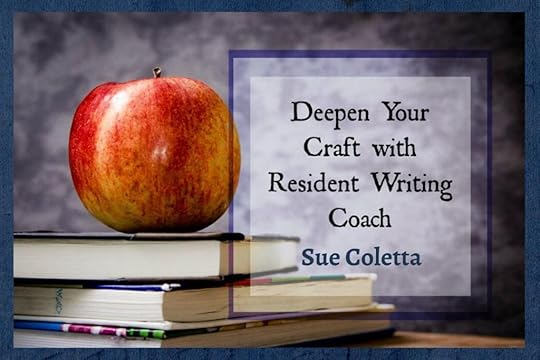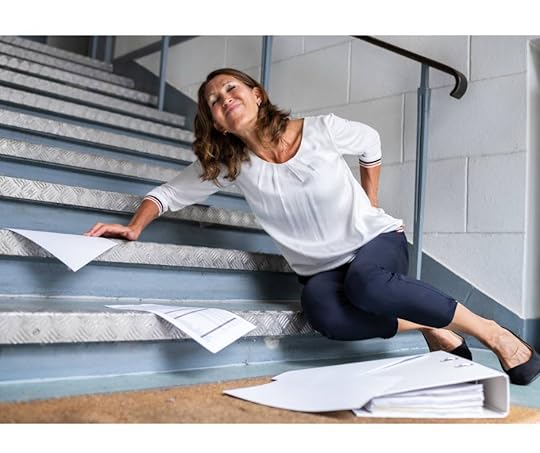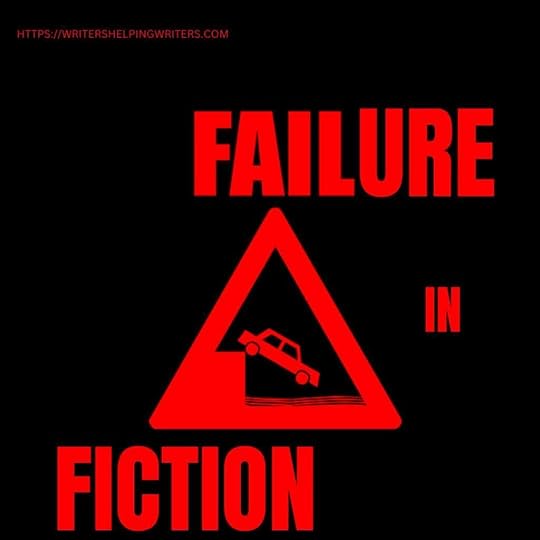Failure in Fiction

Writers need to have a sadistic streak to inflict pain���emotional or physical���on our beloved characters repeatedly, but failure is important in fiction. Without it, the story drags.
Why to Include FailureWithout failure, we decrease the stakes, consequences, and slow the pace. And, most importantly, without failure there is no character arc. The story may seem messy and uncomfortable when we add failure, but it also adds authenticity. Mistakes and failure are part of life. If we don���t shy away from failure, the characters��� journey feels real.
Think about it this way. Who would you rather champion���a character who worked hard, persevered, failed a gazillion times, and still achieved massive success or someone who inherited a business?
How to Include FailureIt���s not difficult to make a character fail. The possibilities are endless. Failure might result from the character���s flaws, fears, insecurities, inabilities, or simple mistakes and oversights that have major consequences later in the story.

Here a few examples:
Trusting the wrong personRefusal to accept help or adviceMisheard informationTripping, slipping, fallingUnable to follow simple directionsLosing something that���s important to the storylineRushing without forethoughtMisunderstanding a friend/parent/mentorMisunderstanding directions, plot clues, etc.Misreading a situationOverhearing something incorrectlyMisplaced suspicion of an innocent person and/or act of kindnessPhysically failingArriving too lateArriving too earlyDropping an important object that shattersLosing something importantSpeaking without thinking things through firstUnwilling to stay quietSneeze or cough at the wrong timeNot speaking up when they shouldForgetfulnessNot trusting or second-guessing their own capabilitiesNot being willing to take a needed riskWhere to Include Failure
We don���t need major complex issues to fail. Speedbumps in every scene help with pacing. Our character doesn���t need to be a complete klutz, but they should make mistakes. Otherwise, the character won���t feel real.
We enjoy watching others fail. It���s human nature. How many of you have gotten frustrated with a cyclist who���s holding up traffic? Have you ever wished the car in front of him would open their door? Or the tires would blow, sending the cyclist over the handlebars?
Admit it. We���ve all experienced similar thoughts. Do we want the cyclist harmed? No. We just want him out of our way. And let���s face it, if he crashes it���d be a lot more interesting. Dark thoughts entering our headspace doesn���t mean we���re bad people. It means we���re human.
Failure creates conflict.Conflict creates tension and raises the stakes.Tension is far more interesting than continual success, which gets boring fast.To answer the ���Where?��� question, include failure when things are going a little too well. Now, it doesn���t need to be a major failure. The character arc shouldn���t change.
Four quartiles or Parts (each represent 25% of the book) of a character arc should look like this:
Part I���The Setup: Introduce main character, hook the reader, and setup First Plot Point. In terms of character, they���re like a newborn experiencing the world for the first time. With an uncertain future ahead of them, they should fail. A lot. Part II���The Response: Main character reacts to their new reality, the goals, stakes, and obstacles revealed by the First Plot Point. They���re trying new things and failing a great deal. Part III���The Attack: Midpoint information or awareness causes the MC to change course in how to approach obstacles. The MC is now empowered with intel on how to proceed, rather than staying reactive. We still need failure, but they���re smaller mistakes.Part IV���The Resolution: The MC summons the courage and growth to find a solution, overcome inner obstacles, and conquer the villain(s). Failure is minimal here, if at all.When to Include Failure
Let���s say your character is cruising along. They���ve met many of their scene-level goals and are making decent progress. Now would be the perfect time for failure. I���ll show you what I mean���
A scene is broken into two parts, Scene and Sequel.
Scene StructureGoal: What does the character want to achieve? What���s their objective?
Conflict: Obstacles preventing the character from reaching that goal. *Here���s a great place to add failure.
Disaster: Things worsen. *Or here.
Sequel StructureReaction: How does the character react to the Disaster? *Another perfect spot for failure.
Dilemma: A no-win situation. If they do A, B might happen. But if they refuse to act, the fallout will be worse.
Decision (which leads to the Goal of the next scene): The act of choosing what to do. *We can even add failure here (i.e. short-sightedness).
On a micro-level, include failure in motivation-reaction units or MRUs.
Motivation (external): Something elicits a response in our character.Reaction (internal): How the character responds to the outside stimuli.Also known as cause and effect, failure can only occur in the reaction. Why? Because the MC has no control over external stimuli. Could their past actions or mistakes be responsible for the motivation/cause they���re facing now? Absolutely. Hence why failure is so effective in fiction. As mentioned above, failure leads to conflict. And conflict drives the story.
What types of failure have you included in a WIP?The post Failure in Fiction appeared first on WRITERS HELPING WRITERS��.
Writers Helping Writers
- Angela Ackerman's profile
- 1014 followers



